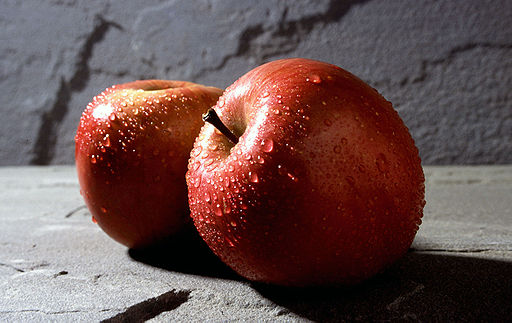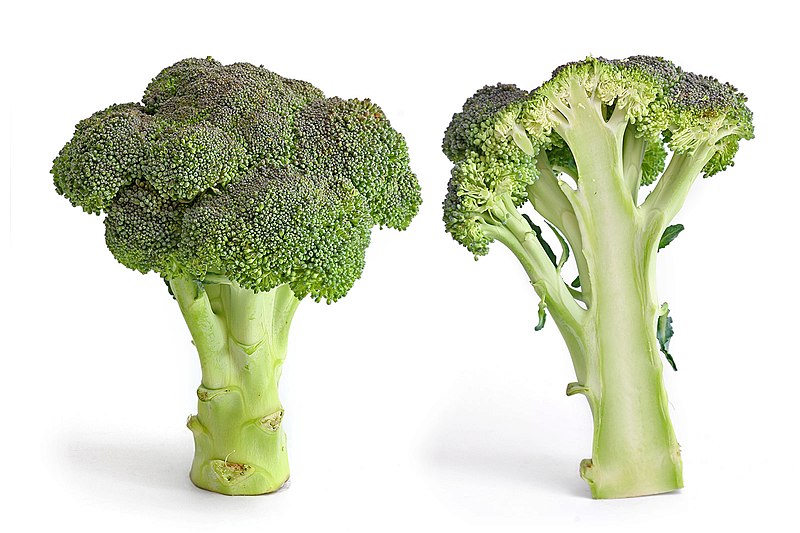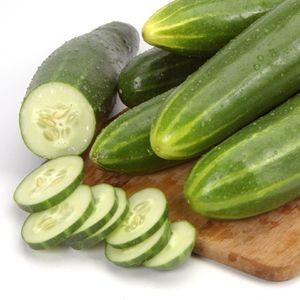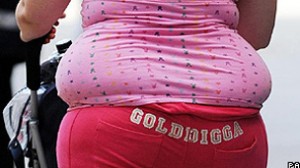Apple-
are an excellent source of antioxidants, which combat free radicals. Free radicals are damaging substances generated in the body that cause undesirable changes and are involved in the aging process and some diseases.Some animal studies have found that an antioxidant found in apples (polyphenols) might extend lifespans.Researchers at The Florida State University said that apples are a “miracle fruit”.In their study, the investigators found that older women who starting a regime of eating apples daily 

Almonds -
Have more fiber than any other tree nut.The fatty acid profile of almonds, which is made up of 91-94% unsaturated fatty acids, may partly explain why it helps maintain healthy cholesterol levels.

OATMEAL
Oatmeal is meal made from rolled or ground oats. In the United Kingdom and the Republic of Ireland, the term “porridge” or “porridge oats” are common terms for the breakfast cereal that is usually cooked.
Interest in oatmeal has increased considerably over the last twenty years because of its health benefits.
Studies have shown that if you eat a bowl of oatmeal everyday your blood cholesterol levels, especially if they are too high, will drop, because of the cereal’s soluble fiber content. When findings were published in the 1980s, an “oat bran craze” spread across the USA and Western Europe. The oats craze dropped off in the 1990s.
In 1997, the FDA (Food and Drug Administration) agreed that foods with high levels of rolled oats or oat bran could include data on their labels about their cardiovascular heart benefits if accompanied with a low-fat diet. This was followed by another surge in oatmeal popularity.
Oats is rich in complex carbohydrates, as well as water-soluble fiber, which slow digestion down and stabilize levels of blood-glucose.
Oatmeal is very rich in B vitamins, omega-3 fatty acids, folate, and potassium.
BROCCOLI
reduce the risk of developing heart disease, and some cancers. Broccoli also contains vitamin C, as well as , an antioxidant.
Researchers from the University of Illinois wrote in Nutrition and Cancer that lightly steamed broccoli can significantly reduce your risk of developing cancers (steaming it slightly does not destroy the enzyme myrosinase). However, if you overcook it the health benefits are undermined.
A UK study found that sulforaphane, a compound found in broccoli and other cruciferous vegetables such as cabbage and Brussels sprouts, could help fight osteoarthritis

-
Blueberries are rich in fiber, antioxidants and phytonutrients. Phytonutrients are natural chemicals found in plants.
Unlike minerals and vitamins that are also found in plant foods, phytonutrients are not essential for keeping us alive. However, they may help prevent disease and keep the body working properly.
According to a study carried out at Harvard Medical School, elderly people who eat plenty of blueberries (and strawberries) are compared to other people of their age who do not.10
Scientists at Texas Woman’s University found that blueberries help in curbing . Plant polyphenols, which are abundant in blueberries, , while inducing the breakdown of lipids and fat (lipolysis).Regular blueberry consumption can by 10%, because of the berry’s bioactive compounds, anthocyanins, scientists from East Anglia University, England, and Harvard University, USA reported in the American Journal of Nutrition.

OILY FISH
These types of fish have oil in their tissues and around the gut. Their lean fillets contain up to 30% oil, specifically, fatty acids. These oils are known to provide benefits for the heart, as well as the nervous system.Oily fish are also known to provide benefits for patients with inflammatory conditions, such as arthritis.Oily fish also contain vitamins A and D.Scientists at UCLA’s Jonsson Comprehensive Cancer Center found that when patients went on a low-fat diet with fish oil supplements.

LEAFY GREEN VEGETABLES
Studies have shown that a high intake of dark-leafy vegetables, such as spinach or cabbage may significantly lower a person’s risk of developing diabetes type 2.
Researchers at the University of Leicester, England, said that the impact of dark green vegetables on human health should be investigated further, after they gathered data from six studies. They reported their findings in the
Spinach, for example, is very rich in antioxidants, especially when uncooked, steamed or very lightly boiled. It is a good source of vitamins A, B6, C, E and K, as well as selenium, niacin, zinc, phosphorus, copper, potassium, calcium, manganese, betaine, and iron.

SWEET POTATOES
Sweet potatoes are rich in dietary fiber, beta carotene, complex carbohydrates, vitamin C, vitamin B6, as well as carotene (the pink, yellow ones).
The Center for Science in the Public Interest, USA, compared the nutritional value of sweet potatoes to other vegetables.17 The sweet potato ranked number one, when vitamins A and C, iron, calcium, protein and complex carbohydrates were considered.

WHEAT GERM
Wheat germ is the part of wheat that germinates to grow into a plant – the embryo of the seed. Germ, along with bran, is commonly a by-product of the milling; when cereals are refined, the germ and bran are often milled out.Wheat germ is high in several vital nutrients, such as vitamin E, folic acid (folate), thiamin, zinc, magnesium, phosphorus, as well as fatty alcohols and essential fatty acids.
AVOCADOS
Many people avoid avocados because of its high fat content; they believe that avoiding all fats leads to better health and easier-to-control body weight – this is a myth. Approximately 75% of the calories in an avocado come from fat; mostly monosaturated fat.

Weight-for-weight, avocados have 35% more potassium than bananas.
Avocados are also very rich in B vitamins, as well as vitamin K and vitamin E.
Avocados also have a very high fiber content of 25% soluble and 75% insoluble fiber.
Studies have shown that regular avocado consumption lowers blood cholesterol levels.
Avocado extracts are currently being studied in the laboratory to see whether they might be useful for treating diabetes or hypertension.
Researchers from Ohio State University found that nutrients taken from avocados were able to stop oral cancer cells, and even destroy some of the pre-cancerous cells.
PREGNANCY CARE
They’re often called the “pregnancy police,” those well-meaning friends, relatives and even strangers who like to tell you just what you can and can’t do while you’re expecting.
The dos and don’ts are hard for any concerned pregnant woman to ignore, but there’s so much information out there – and some of it is questionable or downright wrong. How do you know what to believe?
Here, from organizations such as the March of Dimes, the Food and Drug Administration, the Environmental Protection Agency and a specialist in obstetrics who has written a book on pregnancy dos and don’ts, is a general list of what you can do or have and what you should avoid during pregnancy:
Avoid
• Alcoholic beverages, cigarettes and illegal drugs – The use of any of these during pregnancy has been linked to premature birth, low birth weight and serious birth defects. No amount has been determined as safe.
• Cat litter – This can contain a parasite called Toxoplasmois gondii, which causes Toxoplasmosis, a disease that can be fatal to your fetus. Have someone else change your cat’s litter box; if you must do it, wash your hands thoroughly and carefully after changing the box yourself.
• Deli meats and salads – Cold cuts, and tuna or egg salad from a deli can also be contaminated with Listeria bacteria. Elisabeth Aron, M.D., author of Pregnancy Dos & Don’ts (The Stone-song Press, 2008), cautions against eating deli meats and hot dogs unless they’ve been reheated and are steaming hot.
• Certain large fish – Shark, swordfish, tile fish and king mackerel are all known to contain high levels of methyl mercury (thanks to industrial pollution in ponds, lakes and oceans). Mercury can damage the nervous system, especially in children and unborn babies. Visit the EPA’s Web site (www.epa.gov/ost/fish) for more information on risky seafood in different regions of the country.
• Over-the-counter medications – Limit these to remedies considered safe throughout pregnancy, including the pain reliever acetaminophen (Tylenol), antihistamines like Claritin, Zyrtec and Allegra, many antacids and prescribed narcotic pain relievers. Pain relievers like aspirin and those containing ibuprofen (Advil, Motrin, etc.), and the diarrhea medicine Pepto Bismol should be avoided because of their link to birth defects. Always check with your doctor before taking any medicine to be sure that it’s safe for you.
• Raw or undercooked meat, fish, eggs, and unpasteurized milk– These foods can carry bacteria such as salmonella and E. coli, which can make you sick and harm your fetus. Don’t eat any eggs with a runny yolk, and cook beef to at least 160º F.
• Saunas and hot tubs – Studies have linked elevated body temperatures (102º F) to neural tube defects and miscarriages. (Also, be cautious with electric blankets, particularly during the first trimester, because of elevated body temperature.)









